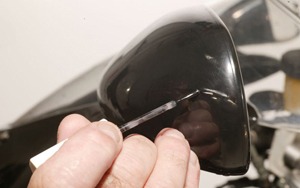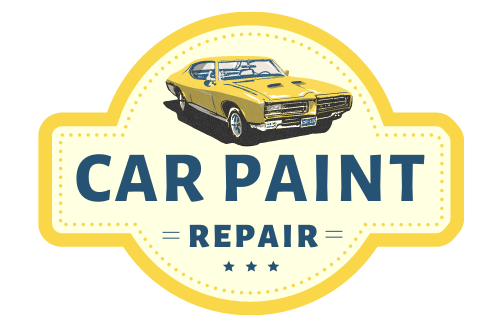
Car paint touch-up is an inexpensive and easy way to fix paint scratches and chips. We all try to keep our car looking shiny and new as long as we can after driving it off the dealership lot.
But over time, those ugly scratches just keep adding up. Unfortunately, car paint scratches are a fact of life. The only sure way to protect your car is to put it in a garage and never drive it again.
You’ll be very surprised to find out that it doesn’t take much to scratch a car. Basically, anything can damage the paint. It can get damaged from road debris, little stones from the driveway, fingernails when you open the door, shopping cart rubbing against the car’s body, drive-through car wash, removing the snow or ice, tar, sap, bugs, acidic bird droppings, and much more.
Discovering those damages is a very sickening feeling, but what is even more disappointing is getting a quote from the body shop for repairing them. Pro shops can charge hundreds of dollars to repair just a few minor scratches.
After getting the quote, a lot of people just feel helpless. They don’t know what to do. Should they try repairing it themselves or pay all this money to someone else?
The good news is that with the high-quality products on today’s market, you can fix almost any paint damage yourself. Minor scratches and chips can be repaired in just a few minutes using touch-up paint.
Car touch-up paint comes in four different forms, as a paint pen, in a bottle, in a spray can, or in a bigger can ready for a spray gun. The most popular touch-up product is a paint pen. It is inexpensive, very easy to use, and doesn’t dry out. You can store it in a car for small emergency repairs.
Touch-up paint bottles can handle damages not larger than a dime. It comes with a brush conveniently attached to the cap. Simply brush the paint in thin layers.
Spray cans are used for bigger problems, but are also very easy to apply.
The important thing to remember when using a spray can is personal safety. Protect your eyes, skin, and lungs from toxic paint fumes that can cause health problems like asthma. Wear a goggles, respirator
, and chemical-protective gloves
. Don’t spray in an enclosed area without a good flow of air. The best place for spray painting is outside.
Before starting the repair work, prep the area first. Get rid of all contaminants, oil, and wax by washing the surface with warm water and dish soap and then following it with prep solvent.
When the area is clean and free of dirt, you can start the touch-up process. Some people make a mistake by using a paper towel or a washcloth for cleaning. These materials are too tough and might scratch the clear coat. Use a microfiber cloth instead.
No matter what touch-up paint type you are using, for best results apply multiple thin coats giving each coat enough drying time. If you apply all the layers at once, the area might look raised. With enough patience and a steady hand, you can get excellent results.
